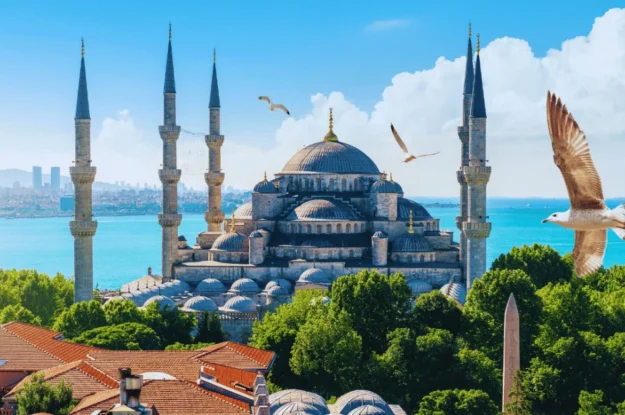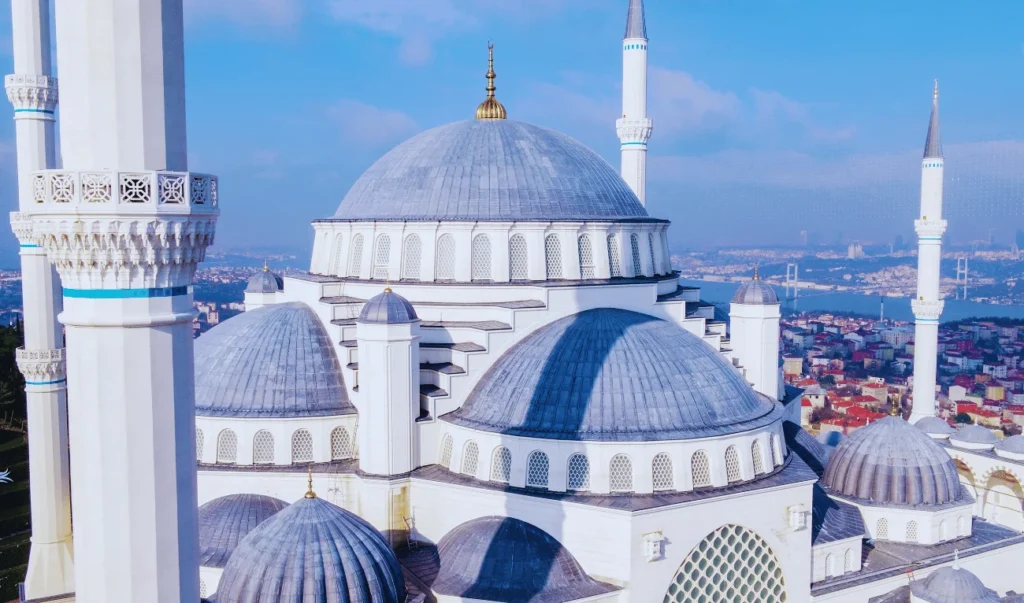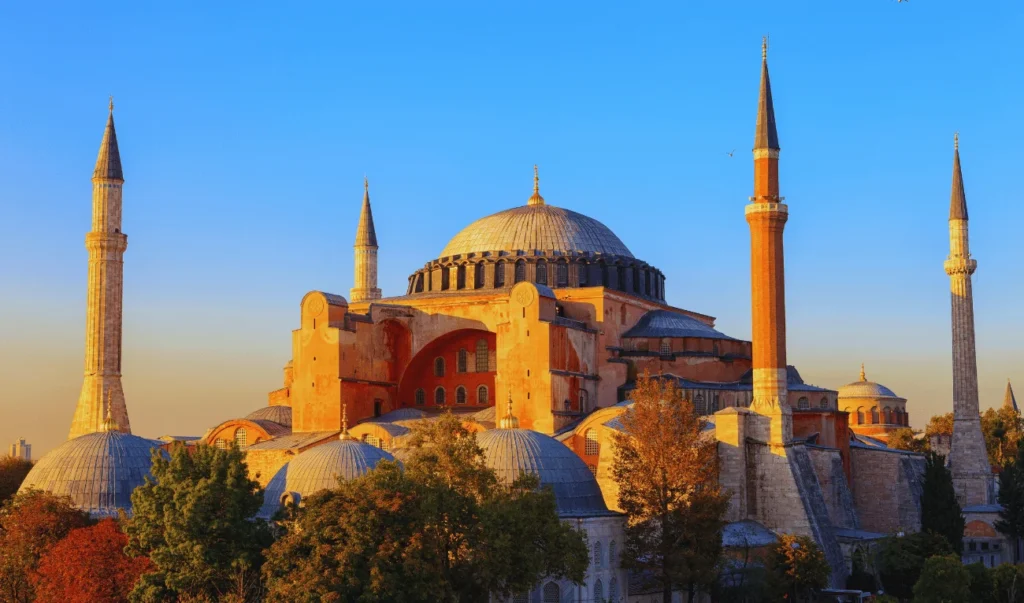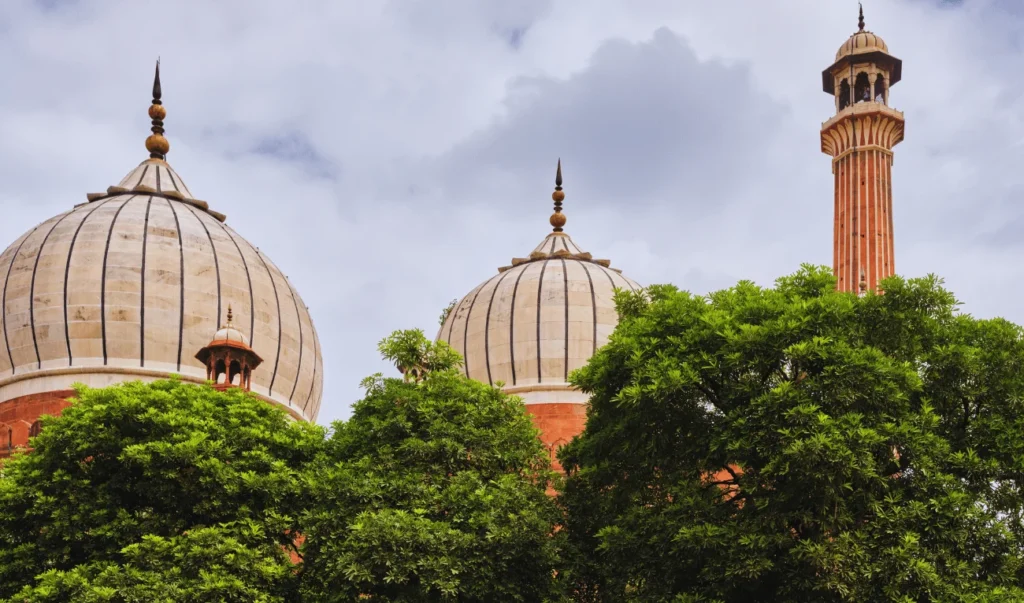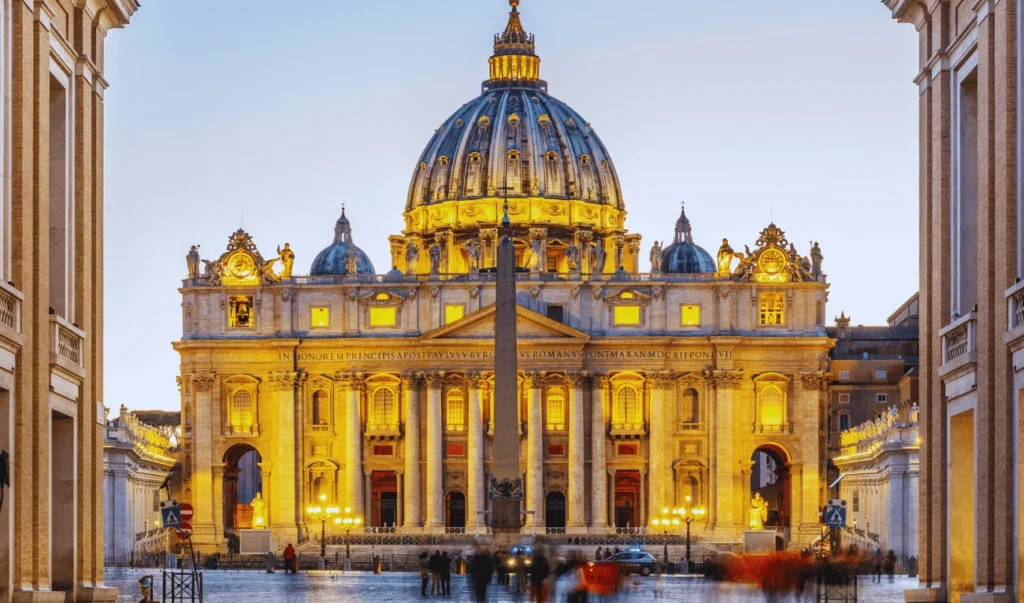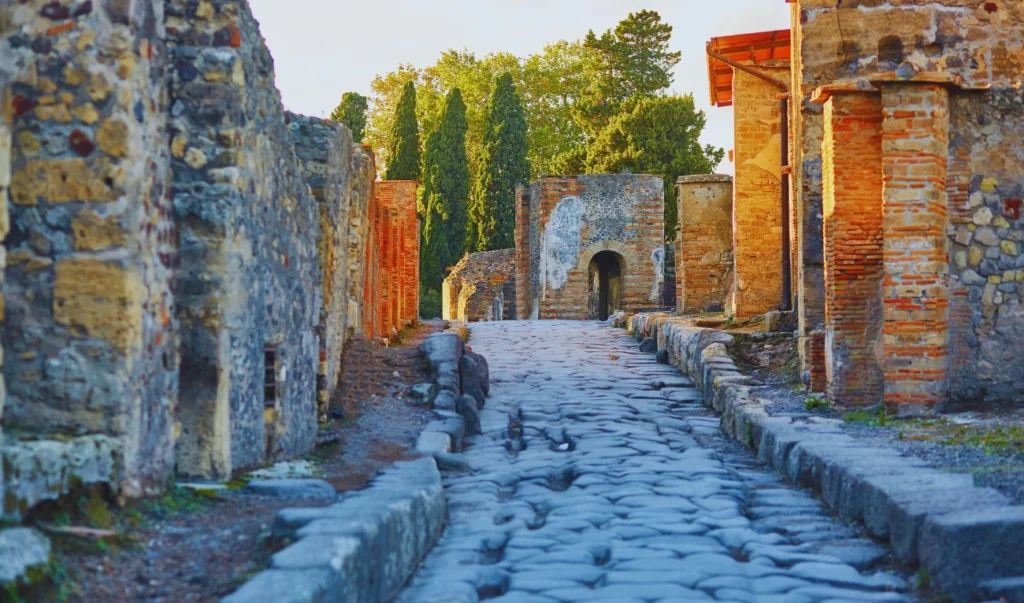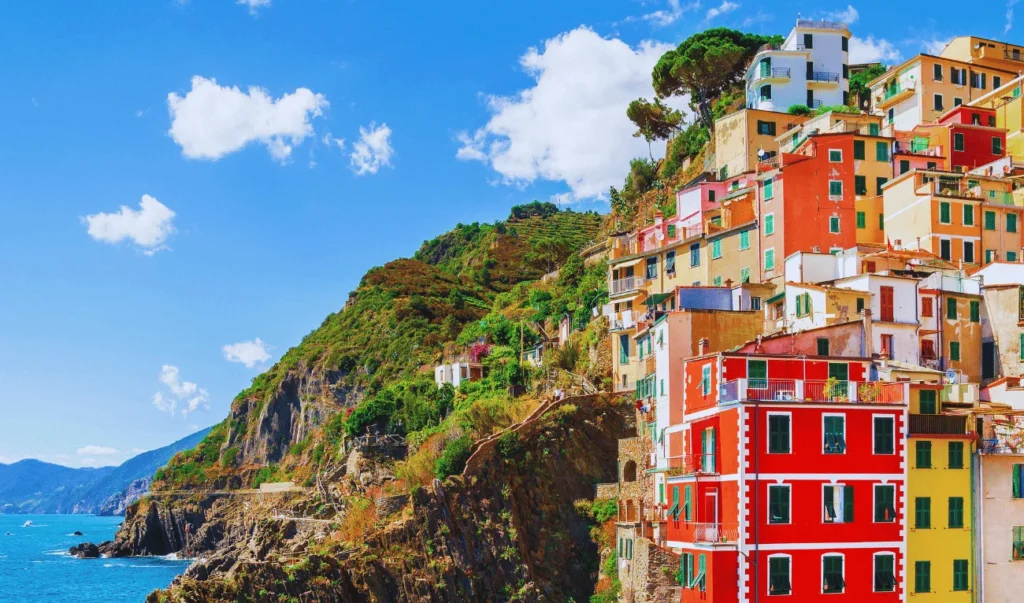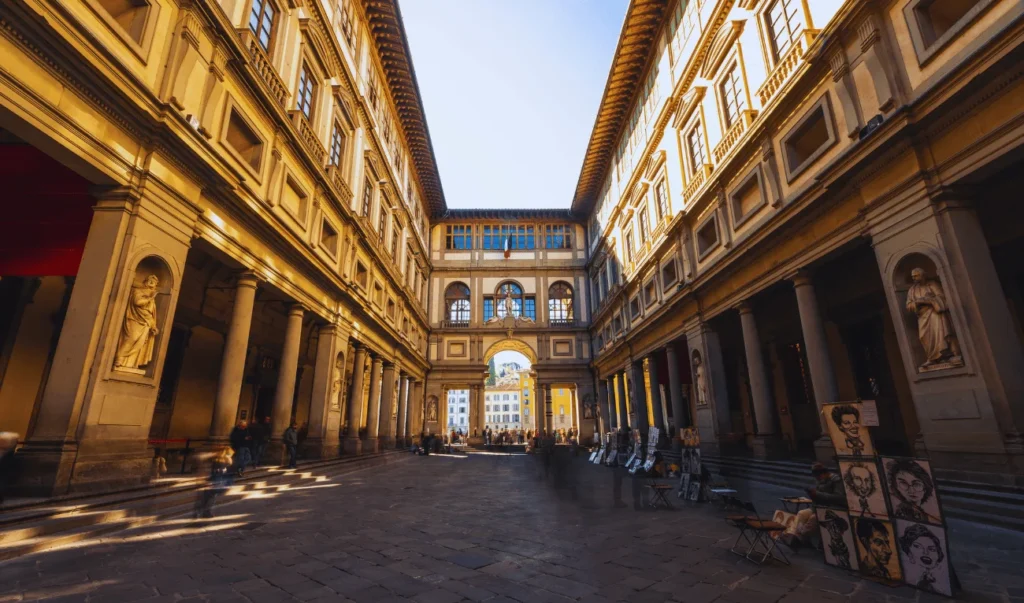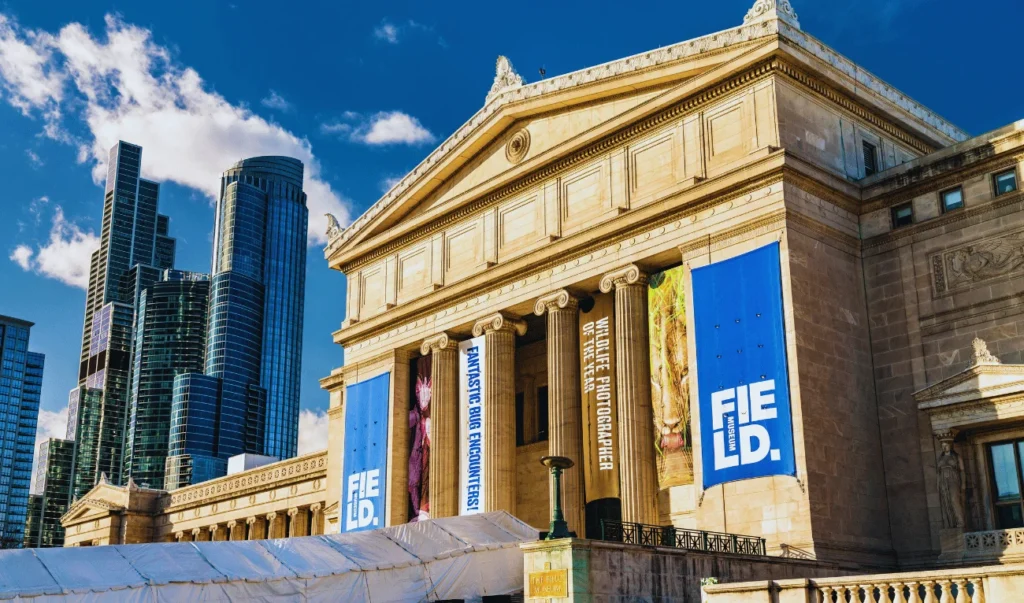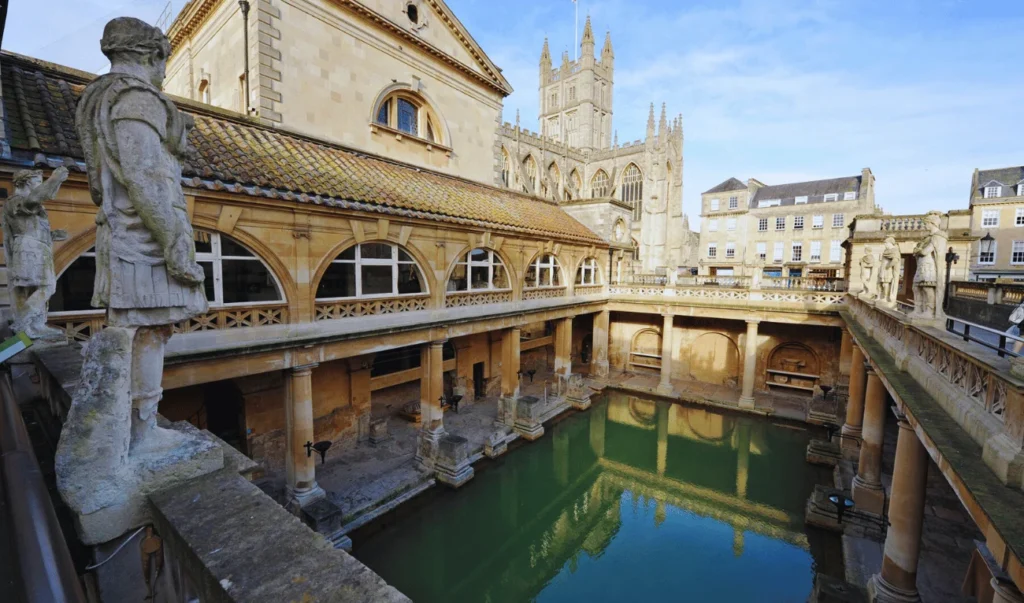11 of the Most Beautiful Parrots in the World
“Parrots: the ultimate reminder that in a world full of noise, the most beautiful melodies are those that come from the heart.”
Do not forget to tell me your favorite Parrot in the comments.
Do Parrots Talk Human Language?
Some parrots that can mimic human words have memorized vocabulary of up to 2,000 words. A few of them also have some cognitive understanding of the language.
A small Australian parakeet is green with a yellow head in the wild.
Are Parrots Good Pets
Parrots are one of the greatest pets. They remain very loyal to the owner and can learn to perform many tricks.
Characteristics of Parrots
On average, Parrots are vibrant, highly intelligent, easy to train, friendly, affectionate, and loyal to their owners. They differ in appearance, size, and features.
11 Most Beautiful Parrots in the World and fall in love.
As you delve into the world of parrots, you’ll discover a realm of endless fascination,
where every feather tells a story and every chirp holds a secret. These extraordinary birds remind
us of the wonders of nature and the profound connections we can forge with the animal kingdom
Explore, our following list of most beautiful parrots and let the enchanting world of parrots
bring a splash of color and joy to your life.
1. Dusky Lories

Dusky Lories, also called white-rumped lory or the dusky-orange Lories, are amazing parrots native to the lowlands of New Guinea, Batanta, Salawati, and Yapen.
| Personality | Intelligent, affectionate, playful, Quick learners, Love their owners |
| Lifespan | Up to 30 years |
| Size | 26 Cm 10 Inch |
| Appearance | Short-tailed parrots with whitish back and rump and orange |
| Diet | Mixture of fruit, seeds, nectar, and buds |
2.Rainbow Lorikeet
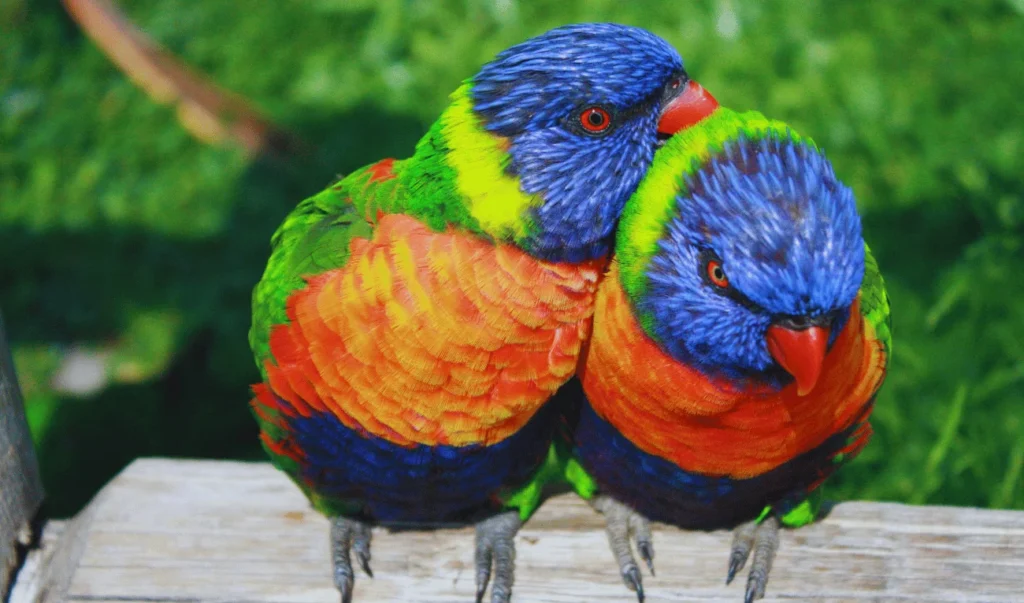
The Rainbow Lorikeet, aptly named for its dazzling array of colors, is one of the most visually stunning parrots in the world. These medium-sized parrots are native to Australia and nearby islands, where they brighten up the landscape with their vivid plumage and lively antics.
Rainbow Lorikeets are not just beautiful; they are also highly active and social birds. Their playful nature and curiosity make them a delight to watch and interact with. They are known for their acrobatic abilities, often seen hanging upside down or performing aerial flips. In addition to their visual appeal, Rainbow Lorikeets are also quite vocal, communicating with a variety of chirps, squawks, and whistles.
| Feature | Description |
|---|---|
| Scientific Name | Trichoglossus moluccanus |
| Origin | Australia, eastern Indonesia, Papua New Guinea |
| Length | 25-30 cm |
| Weight | 75-157 grams |
| Lifespan | 20-30 years (with proper care) |
| Colors | Bright red, blue, green, and yellow plumage |
| Diet | Nectar, fruits, pollen, some seeds |
| Temperament | Active, social, playful, can be noisy |
| Special Needs | Requires a diet rich in nectar, spacious cage, mental stimulation |
| Vocalizations | Loud and varied calls, including chirps, squawks, whistles |
3.Red-tailed black cockatoo

The red-tailed black cockatoo, also known as Banksian- or Banks’ black cockatoo, are large black cockatoos native to Australia.
| Personality | Affectionate, social, excitable, and sometimes very loud animals, intelligent and loyal Status wonderful pet. |
| Lifespan | Up to 50 years |
| Size | 60 Cm 24 Inch |
| Appearance | Male features glossy black with bright red panels in its tail. The female has generally duller plumage and has yellow spots on the head, neck, and wings. Males have a characteristic pair of bright red panels on the tail |
| Diet | Seeds, but also fruits, nuts, bulbs, flowers, and insects |
4.Blue-and-Yellow Macaw

The blue-and-yellow or blue-and-gold Macaws are among the biggest and one of the most beautiful Parrots native to South and Central American woodlands and forests.
| Personality | Very social, Best Talking Bird, Can Mimic Human VoiceDemands Great Attention. |
| Lifespan | 30-70 years |
| Size | 76-86 Cm 29-34 In |
| Appearance | Beautiful Striking Yellow/ Golden and Blue Feathers, white face, and Very Powerful Black Beak. |
| Diet | Seeds, but also fruits, nuts, bulbs, flowers, and insects |
5.Scarlet Macaw
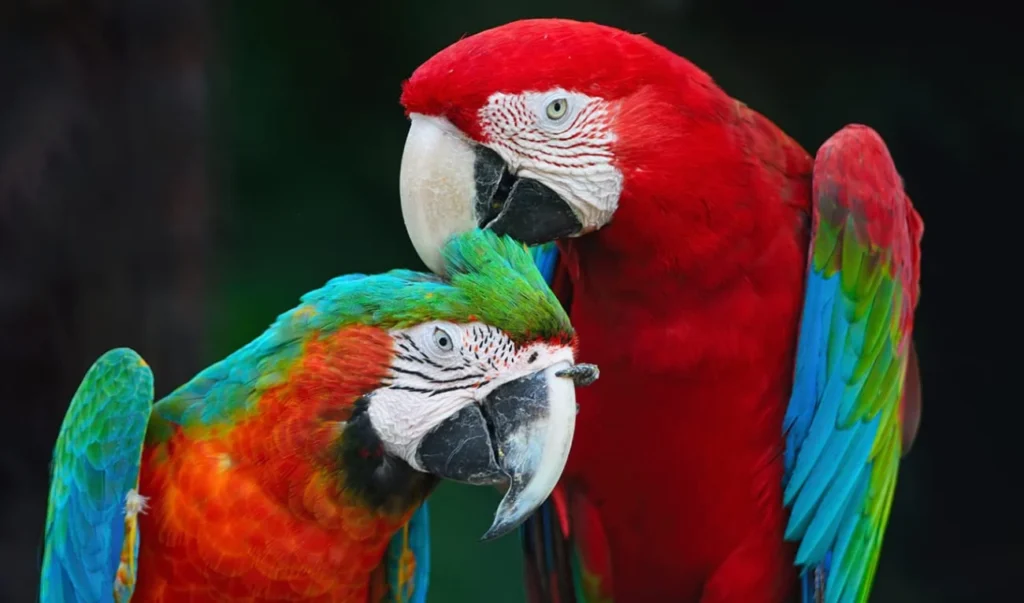
Scarlet Macaws are large and beautiful parrots native to Central and South America. Bugs, snails, and flowers are their routine diet. They can be very loud and even call their groups from miles away. The scarlet macaw will thrive in a large environment and suffer in an inadequate cage for its size.
| Personality | Affectionate, social, excitable, and sometimes very loud animals, intelligent and loyal Status wonderful pet. |
| Lifespan | 40-50 years |
| Size | 80-83 Cm 30 – 33 In |
| Appearance | Popular pets, lively, affectionate birds, mostly live in pairs. |
| National Bird Of Honduras | Country in Central America |
6.Sulphur Crested Cockatoo
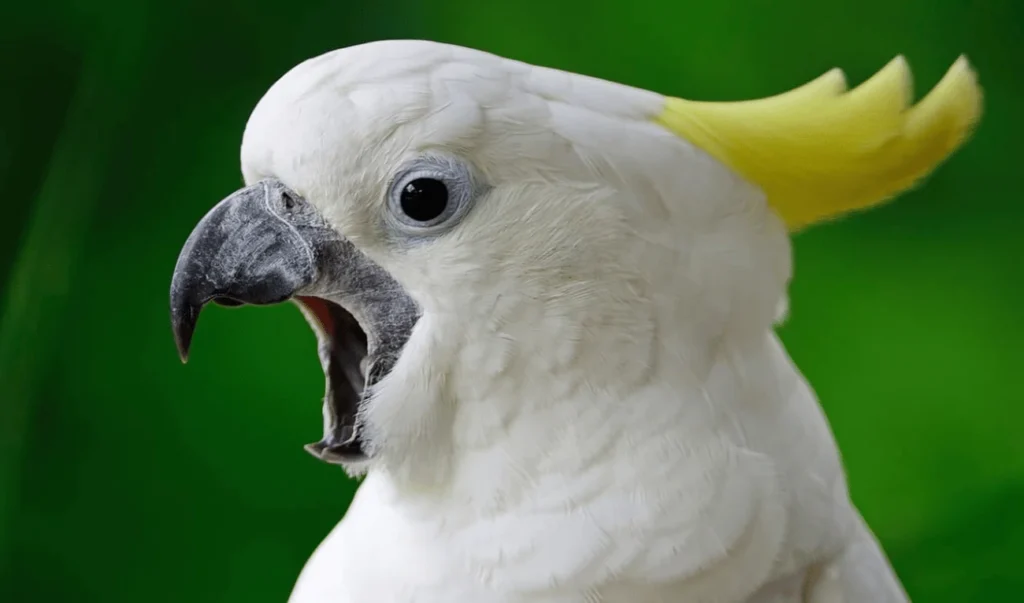
The sulfur-crested cockatoos are larger and noisy white cockatoos native to rainforests of Australia, New Guinea, Indonesia, and New Zealand.
| Personality | Popular pets, lively, affectionate birds, mostly in pairs, have strong human bondings. |
| Lifespan | Up to 40 years |
| Size | 40 -50 Cm 15 – 20 Inch |
| Appearance | One of the most beautiful large white birds with a grey-black bill and sulfur-yellow crest. |
| Diet | Seeds, fruits, hearts of palm trees, and insects. |
7. Military Macaw

The military macaw is a medium-sized macaw native to Mexico and South America. They resemble a military parade uniform.
| Personality | Social, gentle, intelligent, affectionate, and develop strong bonds with humans. |
| Lifespan | Up to 60 years |
| Size | 70 -110 Cm 33-43 Inch |
| Appearance | Have a Green plumage like military parade outfit with a beautiful red round patch on the head. |
| Diet | Seeds, fruits, hearts of palm trees, and insects. |
9. Galah
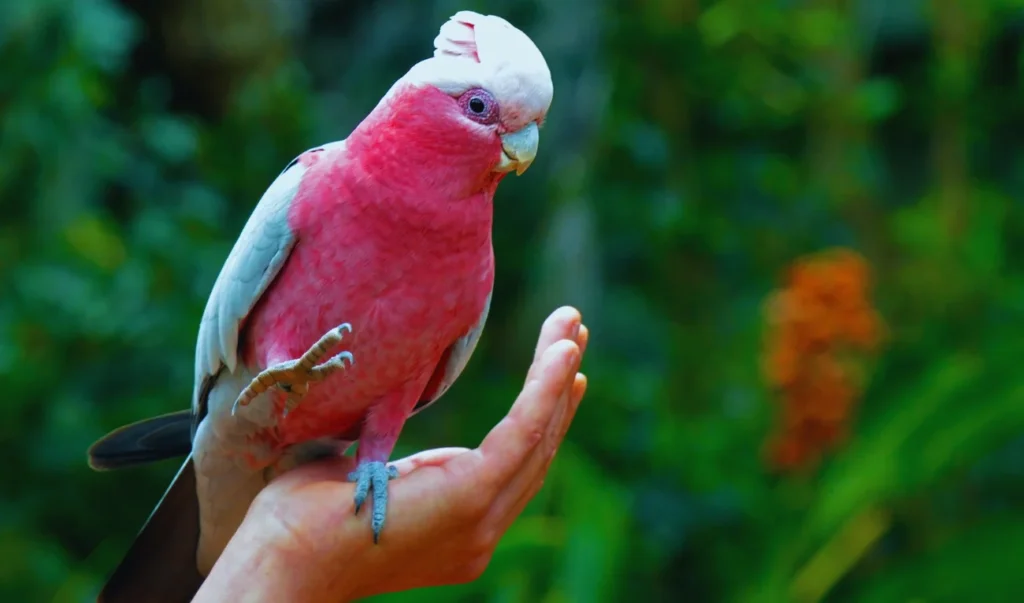
The Galahs or pink cockatoos are, also known as the rose-breasted cockatoos, are commonly found in Austra. Here beautiful colors and attractive personalities make them great pets. They like to eat seeds.
| Personality | Clever, monogamous, Intelligent, can mimic repeated voices, affectionate, adorable, social develop strong bonds with its owner. |
| Lifespan | Up to 40 years |
| Size | Up to 36 Cm Up to 14 Inch |
| Appearance | Male features Pink head, crest, and breasts with dark brown eyes. At the same time, females have a pink one, rose-pink head, neck, and underparts, with paler pink crown, and grey back, wings. |
| Diet | Feeds on seeds, nuts, berries, roots, and occasionally insects |
10.Hyacinth Macaw

The hyacinth macaw is a gentle giant of eastern south and central America. These Macaws are the largest parrots on earth in length but very kind and gentle in personality. Hyacinths are classified as Vulnerable on the International Union for Conservation of Nature’s Red List.
| Personality | Social birds, Intelligent, can be trained easily, gentle, affectionate, have strong bonds with humans, and like to live in pairs. |
| Lifespan | Up to 50 years |
| Size | Up to 40 inches (100 cm) |
| Appearance | Right blue plumage, bare yellow eye-ring circles, yellow chin, a strongly hooked beak, and zygodactylous feet. |
| Wingspan | up to 60 inches (150 cm) |
11. The Eclectus

The Eclectus parrot, Eclectus roratus, is a brightly colored bird native to the Solomon Islands, New Guinea, northeastern Australia, and the Maluku Islands. Males have a bright green plumage with red and blue accents, while females are red with purple and blue markings. Known for their gentle and intelligent nature, these parrots require a spacious cage with toys and perches and need regular interaction and mental stimulation. They can mimic human speech well and commonly face health issues like feather picking and nutritional deficiencies.
| Personality | Generally gentle and social, they enjoy interaction with their human caregivers and can form strong bonds |
| Lifespan | 30-50 years |
| Size | Medium-sized parrot, around 14 inches (35 cm) in length. |
| Appearance | Males: Bright emerald green with a candy corn-colored beak (orange upper mandible and black lower mandible). Females: Vivid red and blue or purple plumage with a black beak. |
| Weight | Typically 12-19 ounces (350-550 grams) |
12.African Grey Parrot

The African Grey parrot, scientifically known as Psittacus erithacus, is renowned for its exceptional intelligence and remarkable talking ability. Native to the rainforests of West and Central Africa, these parrots are characterized by their grey feathers, striking red tails, and white facial markings. They are highly social and require significant mental stimulation and interaction. African Grey parrots can live up to 50-60 years in captivity with proper care. Common health issues include feather plucking, respiratory infections, and calcium deficiencies.
| Feature | Details |
|---|---|
| Scientific Name | Psittacus erithacus |
| Lifespan | 50-60 years |
| Size | 30-33 cm (12-13 inches) |
| Weight | 400-650 grams |
| Native Range | West and Central Africa |
| Diet | Fruits, vegetables, nuts, seeds |
| Feather Color | Grey with striking red tail and white facial markings |
| Talking Ability | Exceptional mimicking skills |
The Responsibility of Parrot Ownership
Deep Bonds and Social Nature
Parrots are more than their physical beauty and intellectual prowess; they are social creatures that form deep bonds with their human companions. Their playful antics, affectionate natures, and the sheer joy they exude make them more than pets—they become family members. Owning a parrot is an enriching experience, filled with moments of wonder and profound connection. With great beauty and intelligence comes great responsibility. Parrots need mental stimulation, social interaction, and a loving environment to thrive. Their long lifespans—often surpassing 50 years—mean they are lifelong companions, deserving of unwavering commitment and care.
Remember, each parrot species has its unique charm and characteristics. Whether it’s their vibrant colors, mimicry abilities, or social behavior, parrots continue to captivate bird enthusiasts worldwide!

